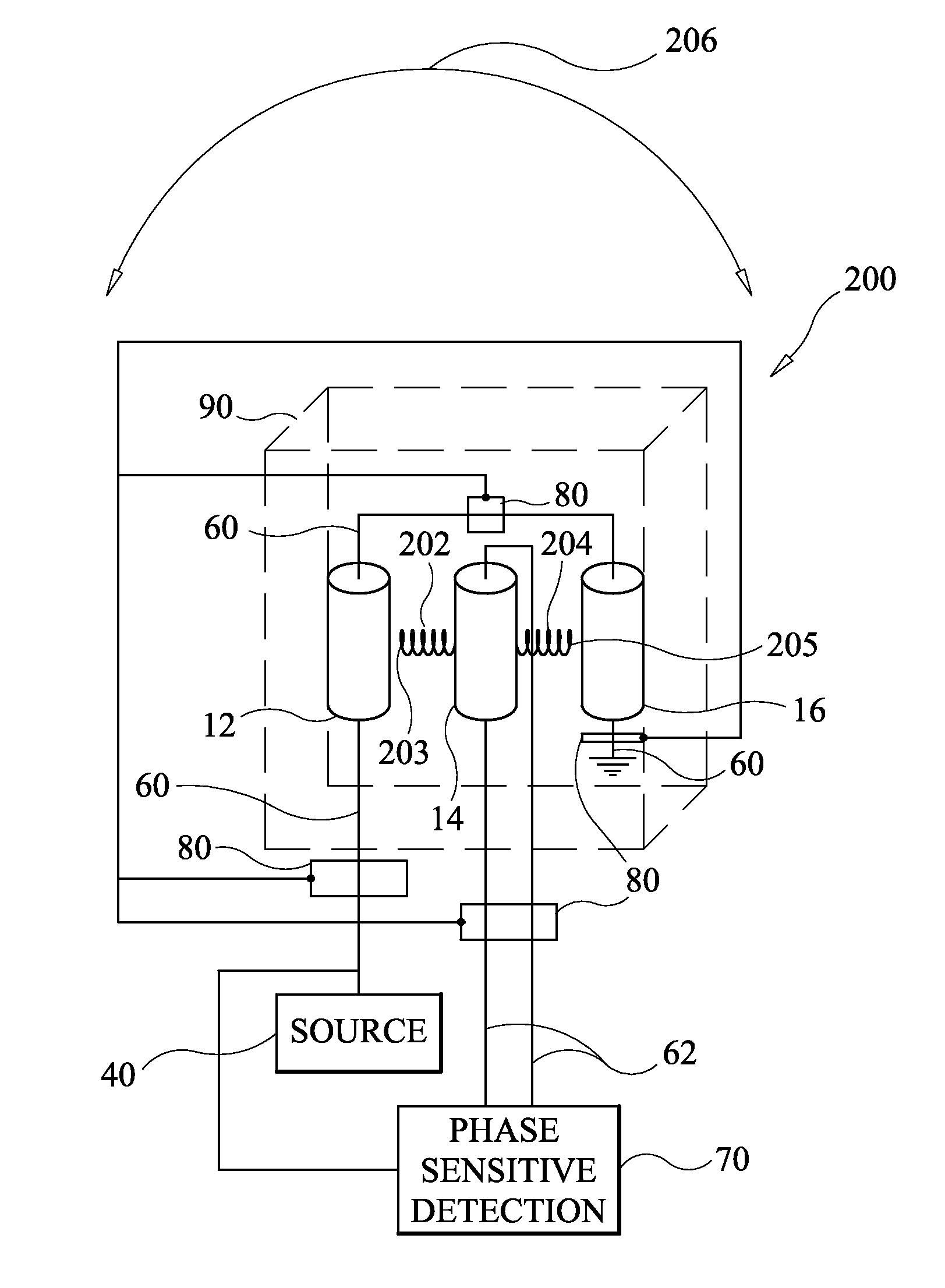Inductive position sensor
- Summary
- Abstract
- Description
- Claims
- Application Information
AI Technical Summary
Benefits of technology
Problems solved by technology
Method used
Image
Examples
Embodiment Construction
[0015]Referring now to the drawings and more particularly to FIG. 1, an inductive position sensor in accordance with an embodiment of the present invention is shown and is referenced generally by numeral 10. For clarity of illustration, only the mechanical aspects of three inductors used in inductive position sensor 10 are illustrated in FIG. 1. The electrical and other construction aspects in various embodiments of inductive position sensor 10 will be presented later herein.
[0016]Inductive position sensor 10 uses spaced-apart and adjacent inductors 12, 14, and 16. For purposes of the present invention, each of inductors 12, 14, and 16 is an independent inductor structure defined by a coil of wire (not shown) wrapped about its own separate and mechanically independent ferromagnetic core 12C, 14C, and 16C, respectively, in accordance with constructions well known and understood in the art. That is, each of magnetic cores 12C, 14C, and 16C is an individual magnetic structure. The indu...
PUM
 Login to View More
Login to View More Abstract
Description
Claims
Application Information
 Login to View More
Login to View More - R&D Engineer
- R&D Manager
- IP Professional
- Industry Leading Data Capabilities
- Powerful AI technology
- Patent DNA Extraction
Browse by: Latest US Patents, China's latest patents, Technical Efficacy Thesaurus, Application Domain, Technology Topic, Popular Technical Reports.
© 2024 PatSnap. All rights reserved.Legal|Privacy policy|Modern Slavery Act Transparency Statement|Sitemap|About US| Contact US: help@patsnap.com










